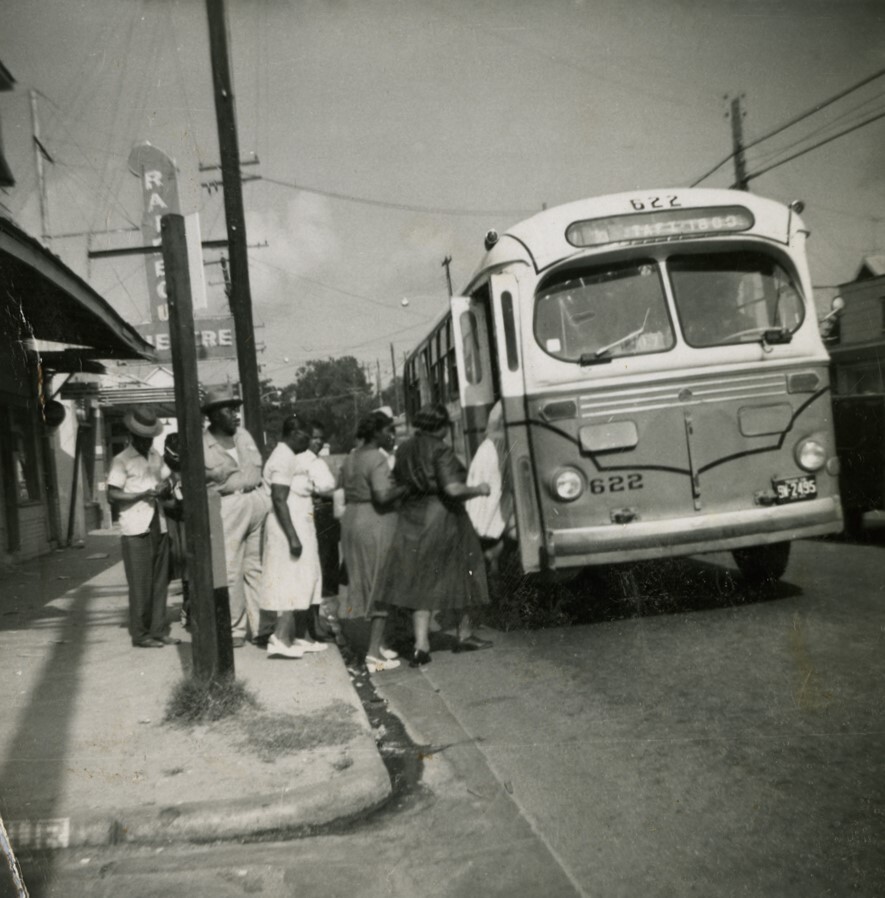Anderson moved to Freedmen’s Town as a young child in the late 1930s.
next →With the restrictions facing Black renters and homeowners in River Oaks and at least 15 of the other oldest neighborhoods in the city, including Old Braeswood and Woodland Heights, places like Freedmen’s Town offered community.
Original
Freedmen’s Town
Boundaries
National
Historic Place Registry Boundaries
In interviews collected at the Gregory School, many people remember places like the Rainbow Theatre, where Anderson met the Olympic athlete Jesse Owens out front during an intermission. Others recall the Roaring 20s, a neighborhood gathering spot that sold barbecue and where people came on the weekends to dance to the jukebox.

Bennie Jackson Ruth remembers working at the cafe owned by her aunt that she would eventually take over. “Everybody knows everybody, so we just had good business,” she says in a 2009 interview.
next →There were scores of other businesses, Ruth recalls, including the Harlem Grill night club, shops for ice cream, dry goods and pharmaceuticals, barbershops, law offices and more, stretching into downtown along the streetcar line.
next →She also remembers with awe the Colored Carnegie Library, one of several funded across the South and designed by Booker T. Washington’s son-in-law. “I was impressed by it because you had to walk up steps to it,” she says.
Many of these places are only names and memories now — the result of specific policy decisions that demolished, dismantled and displaced the people who owned them and frequented them. By 1961, when Rice University was still segregated and the University of Houston had admitted exactly one Black graduate student, access to the underfunded Carnegie Library was limited by “nearby freeway construction,” the TSHA says, and the city closed it without telling “the press or the NAACP.”
next →It was auctioned off and demolished less than a year later.
next →The same happened to other community centers, including Mt. Carmel Missionary Baptist Church, which the city condemned and demolished in 2008.
Scroll down to continue ↓